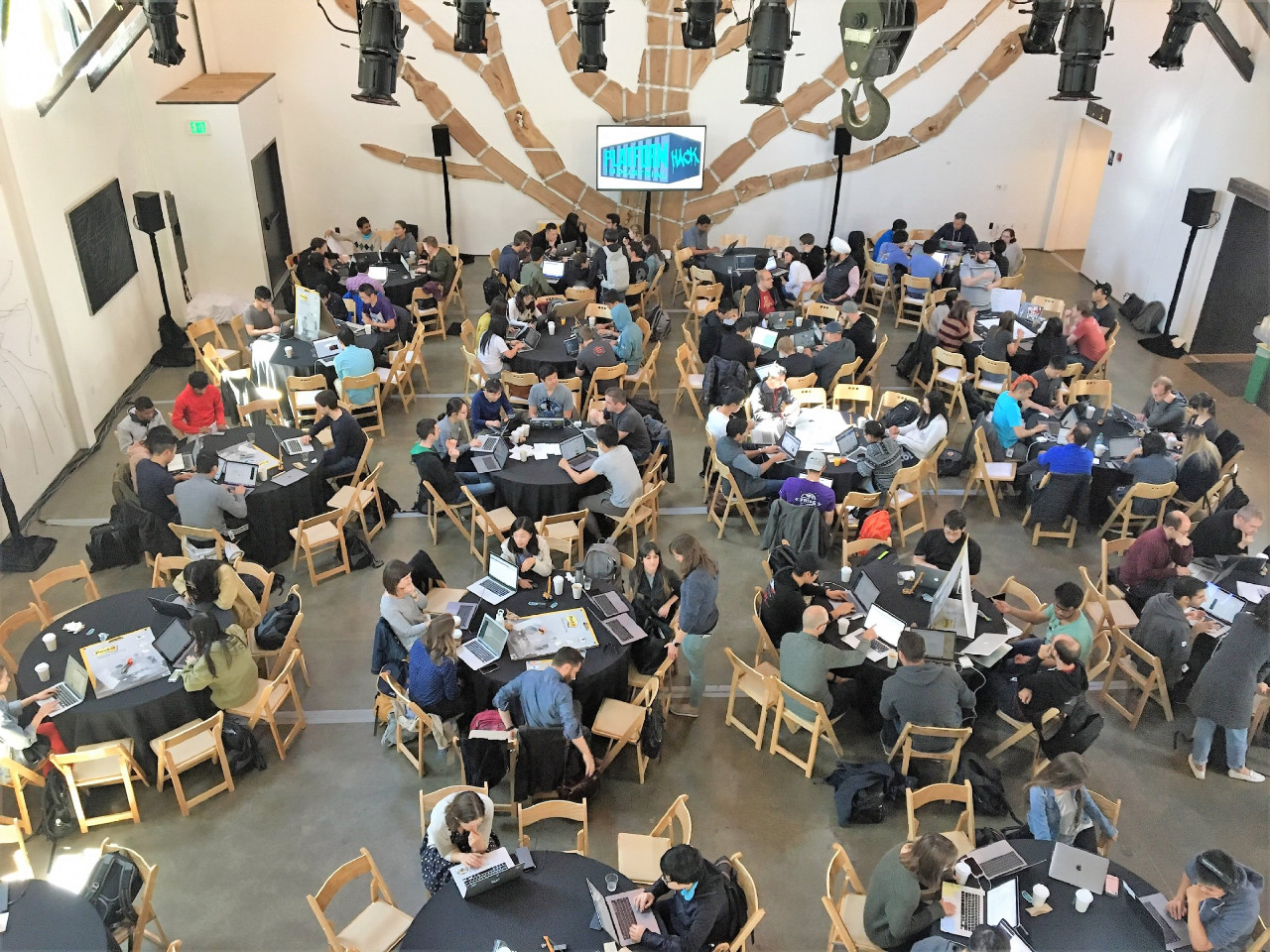
Hackathon
A hackathon is an event in which teams work non-stop to come up with solutions within a short period of time. The event is usually free because it is sponsored by the providers of those cases. The sponsors motivate the participants by offering attractive prices.
Background
Originally (1999) the concept originated from the ICT world, hence the name (hack and marathon). Hacking is then seen as a positive action, namely to come together to improve existing software. This idea is also used today to address societal challenges, such as improving the environment or education.
Set up
The aim of a hackathon is to achieve an innovation by working on it intensively (sometimes for several consecutive days). The participants often bring different talents to form effective teams. These teams are either formed by the participants themselves or by the organisation. The participants will be provided with everything, including ‘wet and dry’. Stripping through nights is part of it. Hackaton contestants go for it (3)! First, the teams get to know the cases and receive the corresponding information. The teams then get to work on the case with the support of specialists. There are also all kinds of sessions that are meant to let the participants relax or learn something new.
The ultimate goal is to arrive at a prototype of a service or product; a minimum viable product (MVP). This MVP has just enough properties to assess its value for the case, without having to be production-ready. The participants will be trained in presenting this MVP to a larger audience, after which a jury will award the prizes. The feasible ideas will be further elaborated after the hackathon.
Technical staff likes (3) to participate in hackathons. Not in the least because they are with many like-minded people among each other.
Virtual hackathon
Because it is difficult to physically bring a group of participants together, virtual hackathons are also organised nowadays. Especially in ICT, people are used to working with each other all over the world via video and voice connections. Employees, however, find this a very bad development (-3), because being together with like-minded people every now and then is of course cool. It does save a lot of travelling (2), because often it concerns people who are flown in from all parts of the world.

